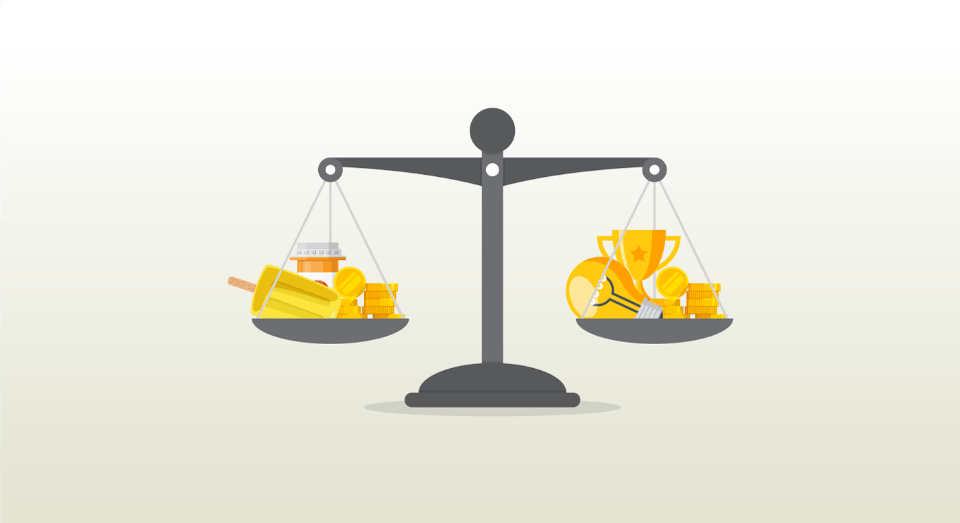The Trust Game: Insights into Developing Long-Term Engagement
Imagine that you’re in a blank room with a machine on one wall. And no, it’s not Halloween yet, so this isn’t some creepy escape-with-your-life scenario. Next to the machine is a single coin and a sheet of instructions explaining that this is an investment machine. If you insert your coin and enter your code before the machine counts down, then a person on the other side of the wall will receive two coins. If the other person does the same, you will also get two coins. But if the other person doesn’t trust you and chooses to keep the coin, then you get nothing from your investment.
With an electronic beep, the machine starts counting down. What do you do?
Economist Robert Axelrod explored the possibilities of this scenario in a computer-modeled study of cooperation in game theory. The insights from this game of trust shed light on what it takes for people to trust each other enough to invest their time, thought, and effort in a collaborative project. Developing a high level of trust requires three conditions: first, repeated interactions; second, mutual rewards; and third, effective communication and execution. Mastering these three conditions sets the stage for long-term engagement among your organization’s employees.
Repeated Interactions Build Trust
Back to our example, let’s say that there’s a counter on the machine that reads “Investment Periods Remaining: 1”. How would that affect your investment? The rational thing to do would be to keep your coin; if the other player doesn’t invest, you still have your coin, and if she does, you have your coin plus the two from her investment. Of course, this doesn’t lead to much of a profit for either of you.
Now what if there were five rounds of this game? If your goal was to get the maximum profit, then you would try to get as many mutual investments as possible, while protecting yourself against the chance that the other player cheats. After testing many different patterns, Axelrod found that the most profitable strategy was to trust, but verify: after an initial investment, do unto the other player as he did unto you the last round.
So how do you get the maximum possible profit in a five-round game? Invest up to the last round, and then withhold your coin and hope that the other player still invests. For more long-term success, both parties need to know the possibilities that come from working together in the future, giving them incentive to keep cooperating instead of burning bridges for short-term gain.

Mutual Rewards Increase Cooperation
So what are these incentives? Real life is never as straightforward as one coin in, two coins out. What if one player invested three coins, great ideas, and leadership skills, while the other player invested two coins, health insurance, a 401k with company match, and popsicles in the break room freezer? Really, the possibilities are endless.
While there are some hard and fast rules for employment, the object of the game is mostly left up to the employer and the employee, and the definition of winning can change at any time. If you’re going to keep the game going, it’s important for both sides to clearly communicate the value of what they’re offering.
The most visible value that you offer to employees shows up in numbers on a paycheck. The additional value your organization offers doesn’t always make it into the bank account, though, and it might even look like a cost based on the withholding numbers. And unless you’re looking at a commission-based employee or counting output on the assembly line, the value that an employee adds to the organization is also hard to quantify.
When it comes to compensation packages, keeping trust is more important than counting beans.
So when it comes to compensation packages, the biggest long-term value for both sides comes from keeping trust, not counting beans. If either side is looking for an exactly equal exchange, then there’s going to be disappointment, whether it’s an employee feeling unappreciated or an employer questioning the employee’s performance level.
Effective Communication Enables Execution
Effective communication and execution ties everything together. As you repeatedly interact with your employees and consistently communicate the value you offer each other, it builds expectations for the future. But what happens when someone makes a mistake?
In an update to his original model, Axelrod ran a simulation where players could make a mistake. This broke his previous model, as a single mistake sent two trust-but-verify players into an endless cycle of vengeance, taking turns cheating on each other. With this observation he found that the most effective model was trust, verify, and forgive. Including a small threshold for forgiveness shifted the focus from punishment to rebuilding cooperation.
Thankfully, we aren’t limited to communicating with our employees through paychecks and annual reviews alone (or we don’t have to be). Setting up regular feedback sessions between employees and their peers and managers lets you communicate individual and organizational successes, which helps recognize the value your employees offer and demonstrates how that value helps your organization achieve its long term goals. These sessions also help identify the roadblocks that pop up in the process, letting your managers coordinate solutions.
Engagement is a Mutual Investment
As you act on these insights, it proves to your employees over time that your organization is investing the resources that they need to succeed and improve in their careers. This focus on both the present and the future provides a powerful incentive for your employees to engage and stay engaged.
Get caught up every month on all things HR. Don't worry, we promise we won't spam you.
Brian Anderson expertly decodes all things HR, drawing on a decade of technical writing in the business organization industry to provide editorial support to internal and external learning programs at BambooHR. His writing explores the different motivations that shape the employee experience and the psychology of human resources.









